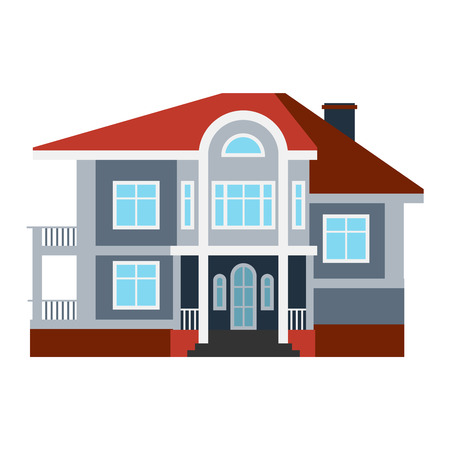Understanding Zoning Laws and Building Codes
Before converting your garage into a legal living space in the U.S., its essential to understand how local zoning laws and building codes apply. These rules determine what changes you can make and whether your project is even allowed in the first place. Not following them could lead to fines, stop-work orders, or even having to undo the entire conversion.
What Are Zoning Laws?
Zoning laws regulate how land and buildings can be used within specific areas of a city or county. They determine whether properties are residential, commercial, industrial, or mixed-use. For garage conversions, zoning laws will tell you if your property is allowed to have an additional living unit or if certain modifications are restricted.
Common Zoning Restrictions
| Restriction Type | Description |
|---|---|
| Setback Requirements | Minimum distance required between your structure and property lines. |
| Parking Requirements | You may need to provide alternative parking if converting a garage eliminates existing spaces. |
| Occupancy Limits | Some zones limit the number of people or units per property. |
| Use Restrictions | Not all zones allow for accessory dwelling units (ADUs) or separate rentals. |
What Are Building Codes?
Building codes ensure that any construction is safe and up to standard. These codes cover everything from electrical systems and plumbing to insulation and emergency exits. If your garage wasnt originally built for living purposes, it likely wont meet these requirements without significant upgrades.
Key Building Code Considerations for Garage Conversions
- Ceiling Height: Most codes require a minimum ceiling height—often 7 feet—for habitable rooms.
- Egress: You must have safe exits like doors or windows large enough for emergency escape.
- Insulation: Walls, floors, and ceilings will need proper insulation to meet energy efficiency standards.
- Electrical & Plumbing: All systems must comply with current code, possibly requiring rewiring or new plumbing lines.
- HVAC: The space must be adequately heated and cooled, either by extending your existing system or adding new units.
Where to Check Local Rules
The best place to start is your city or county’s planning or building department. Many municipalities also have online zoning maps and building code guides. You can also call or visit your local permitting office to ask about the specific requirements for converting a garage in your area. Some cities even offer pre-construction consultations for homeowners planning projects like this.
Helpful Resources by State (Examples)
| State | Zoning & Permit Information Website |
|---|---|
| California | hcd.ca.gov |
| Texas | tdlr.texas.gov |
| Florida | floridabuilding.org |
| New York | nyc.gov/buildings |
| Illinois | chicago.gov/bldgs |
Always double-check with your local authorities before starting any work. Even within one state, rules can vary significantly between cities or counties. Taking the time to understand these regulations upfront will save you money, time, and headaches later on.
2. Getting the Necessary Permits
Before turning your garage into a legal living space, its important to understand what permits are required in your area. Each city or county may have different rules, so the first step is contacting your local building or planning department. They can tell you exactly which permits you’ll need and guide you through the application process.
Why Permits Are Important
Permits ensure that your garage conversion meets local building codes and safety standards. Without them, you could face fines, be forced to undo the work, or run into problems when selling your home later.
Common Permits You Might Need
| Permit Type | Description |
|---|---|
| Building Permit | Required for structural changes like adding walls, windows, or doors. |
| Electrical Permit | Needed if youre installing new wiring, outlets, or lighting fixtures. |
| Plumbing Permit | Applies if youre adding a bathroom or kitchenette with water lines and drains. |
| Mechanical Permit | Covers HVAC work such as installing heating or air conditioning systems. |
| Zoning Approval | Ensures your project complies with local zoning laws for residential use. |
How to Apply for Permits
The permit application process usually starts with submitting detailed plans of your proposed conversion. Here’s a simple breakdown of steps:
- Contact Your Local Building Department: Ask about specific requirements and fees.
- Create Detailed Plans: These should include layout drawings, electrical plans, plumbing layouts, etc.
- Submit Your Application: This might be done online or in person depending on your city or county.
- Wait for Approval: The department will review your plans and may request changes before issuing permits.
- Schedule Inspections: After work begins, inspectors will visit to make sure everything is up to code.
Pro Tip:
If this feels overwhelming, consider hiring a contractor or architect who has experience with garage conversions. They often handle the permit process for you and know how to avoid common pitfalls.
Important Reminder:
You should never begin construction before getting all required permits. Doing so can lead to costly delays and legal issues down the road.

3. Meeting Safety and Habitability Standards
Before you can legally convert your garage into a living space in the U.S., it must meet specific safety and habitability standards. These rules ensure that the converted area is not just comfortable, but also safe for daily living. Here are the key areas you’ll need to address:
Ventilation
Adequate airflow is essential for maintaining indoor air quality. If your garage doesn’t have windows or proper ventilation, you may need to install mechanical systems like exhaust fans or HVAC units. Natural ventilation through operable windows is often required by local codes.
Insulation
Garages are typically not built with insulation meant for living spaces. You’ll need to add insulation to walls, ceilings, and possibly the floor to meet energy efficiency standards. This will help regulate temperature and reduce utility bills.
| Area | Recommended Insulation Type |
|---|---|
| Walls | Fiberglass batts or spray foam |
| Ceiling | Blown-in cellulose or fiberglass batts |
| Floor (if over concrete) | Rigid foam board + subflooring |
Egress Requirements
An egress is a safe exit route in case of an emergency, like a fire. Most building codes require at least one operable window or door that leads directly outside. If youre turning the garage into a bedroom, this becomes even more critical.
Minimum Egress Window Requirements (Varies by Location)
- Minimum opening width: 20 inches
- Minimum opening height: 24 inches
- Net clear opening: 5.7 square feet (5 sq ft for ground-floor windows)
- Sill height: Not more than 44 inches from the floor
Ceiling Height
Your garage must have a ceiling height that meets local building codes, usually at least 7 feet. If your existing ceiling is too low, you might need to raise the roof or lower the floor—both of which can be costly and complex projects.
Other Considerations
- Smoke and Carbon Monoxide Detectors: Required in all sleeping areas and common spaces.
- Lighting and Electrical: Must follow National Electrical Code (NEC) standards with sufficient outlets and lighting fixtures.
- Plumbing: If adding a bathroom or kitchenette, plumbing must comply with local regulations.
Taking time to understand and implement these safety features will help ensure your garage conversion is both legal and livable.
4. Utilities and Structural Modifications
When converting your garage into a legal living space in the U.S., one of the most important steps is updating utilities and making structural modifications to meet residential building standards. These updates ensure comfort, safety, and code compliance.
Plumbing Installation
If your new living space needs a bathroom or kitchenette, youll need to install plumbing lines. This includes water supply lines, drainage pipes, and venting systems. Depending on your local building codes, you may also need permits and inspections before beginning this work.
Common Plumbing Additions
| Feature | Description |
|---|---|
| Bathroom Fixtures | Toilet, sink, shower or tub installation |
| Kitchenette Plumbing | Sink with hot/cold water access and proper drainage |
| Water Heater Connection | May require a dedicated tank or connection to the homes system |
Electrical Wiring
Your converted garage will likely need additional electrical outlets, lighting, and possibly upgraded circuits. An electrician should install wiring that meets NEC (National Electrical Code) standards. Depending on your project’s scope, you might also need a subpanel.
Typical Electrical Upgrades
| Component | Purpose |
|---|---|
| Outlets & Switches | Convenient power access throughout the space |
| Lighting Fixtures | Celling lights or wall sconces for adequate illumination |
| Circuit Panel Upgrade | May be needed if current panel cannot handle extra load |
HVAC System Integration
A comfortable living space needs proper heating and cooling. You can either extend your home’s existing HVAC system into the garage or install a separate system like a ductless mini-split unit. Ventilation is also crucial to prevent moisture buildup.
HVAC Options for Garage Conversions
| System Type | Description |
|---|---|
| Duct Extension from Main Home | Connects garage to central HVAC; may require blower upgrades |
| Ductless Mini-Split System | Energy-efficient and easy to install without existing ductwork |
| Portable Units (Temporary) | Window units or portable heaters for short-term use only |
Insulation and Structural Updates
A garage typically lacks the insulation required for comfortable living. You’ll need to insulate walls, ceilings, and possibly floors. Also consider upgrading windows and doors to energy-efficient models. Any structural changes—like raising the floor or reinforcing walls—must comply with local building codes.
Main Structural Considerations
| Area of Modification | Details | |||||||||||||||||||||||||||||||
|---|---|---|---|---|---|---|---|---|---|---|---|---|---|---|---|---|---|---|---|---|---|---|---|---|---|---|---|---|---|---|---|---|
| Wall Insulation | Add fiberglass batts, spray foam, or rigid foam board behind drywall | |||||||||||||||||||||||||||||||
| Flooring Adjustments | 5. Budgeting and Working with Professionals
| Item | Estimated Cost Range |
|---|---|
| Design & Permits | $1,000 – $5,000 |
| Framing & Insulation | $2,000 – $7,000 |
| Electrical & Lighting | $1,500 – $4,000 |
| Plumbing (if needed) | $2,000 – $6,000+ |
| HVAC Installation | $2,500 – $5,000 |
| Flooring & Drywall | $3,000 – $8,000 |
| Windows & Doors | $1,500 – $4,000 |
| Finishes (paint, trim) | $1,000 – $3,000 |
| Total Estimated Cost | $20,000 – $50,000+ |
Hiring Licensed Contractors and Architects
To meet local building codes and ensure quality work, its essential to hire licensed professionals. Depending on your project’s scope and local laws, you may need:
- An architect: Especially if youre changing the structure or layout significantly.
- A general contractor: To coordinate permits and manage subcontractors like plumbers and electricians.
- Licensed specialists: Electricians or HVAC technicians for specific system installations.
Tips for Hiring the Right Professionals
- Check licenses and insurance: Make sure they’re authorized to work in your state and carry liability insurance.
- Read reviews and ask for references: Look at online ratings or speak to past clients.
- Get multiple bids: Aim for 3–5 quotes before choosing your contractor.
- Review contracts carefully: Ensure timelines, payment schedules, and responsibilities are clearly outlined.
Managing Your Renovation Budget Efficiently
A well-managed budget keeps your project on track and helps avoid surprises. Here are some strategies:
- Create a detailed project plan: Break down each phase of the renovation with estimated costs.
- Add a contingency fund: Set aside 10–15% extra for unexpected expenses.
- Track spending regularly: Use budgeting apps or spreadsheets to monitor every dollar spent.
- Avoid frequent changes: Last-minute design changes can be costly and delay progress.
- Communicate often with your contractor: Stay updated on progress and address issues early.
Tackling a garage conversion is exciting but requires thoughtful planning. By estimating costs accurately and hiring experienced pros who understand your local regulations and vision, you’ll be better prepared for a smooth transformation—both legally and financially.
6. Final Inspection and Legal Rental Options
Once your garage conversion is nearly complete, the final city inspection is one of the last steps before you can legally use the space. This inspection ensures that all work meets local building codes, safety standards, and complies with your initial permit approvals.
What Happens During the Final Inspection?
The city or county inspector will visit your property to examine several key aspects of the converted space. Heres what they typically look for:
| Inspection Area | What Theyre Checking |
|---|---|
| Electrical Systems | Proper wiring, outlets, lighting fixtures, GFCI protection in wet areas |
| Plumbing | Correct installation of pipes, drainage, and ventilation (if applicable) |
| HVAC | Ventilation, heating/cooling systems are safe and up to code |
| Windows & Egress | Adequate natural light and emergency exits |
| Insulation & Fire Safety | Proper insulation and smoke/CO detectors installed |
Tips to Pass the Final Inspection
- Double-check all work matches your approved plans.
- Have your contractor present during the inspection if possible.
- Make sure the space is clean and accessible for inspectors.
Listing Your Garage as a Legal Rental Unit
If youre planning to rent out your newly converted garage, there are additional legal steps depending on your local laws. Some cities allow Accessory Dwelling Units (ADUs) or Junior ADUs (JADUs), but you may need a separate permit or rental license.
Things You May Need to Legally Rent It Out:
- Zoning Approval: Confirm that your property is zoned for rentals or ADUs.
- Certain Features: A private entrance, full bathroom, and kitchen may be required.
- Rental Registration: Some cities require you to register rental units with the housing department.
- Occupancy Limits: Follow local rules about how many people can live in the unit.
Helpful Tip:
If youre unsure about local requirements, contact your city’s planning department or consult with a real estate attorney familiar with ADU laws in your area.


